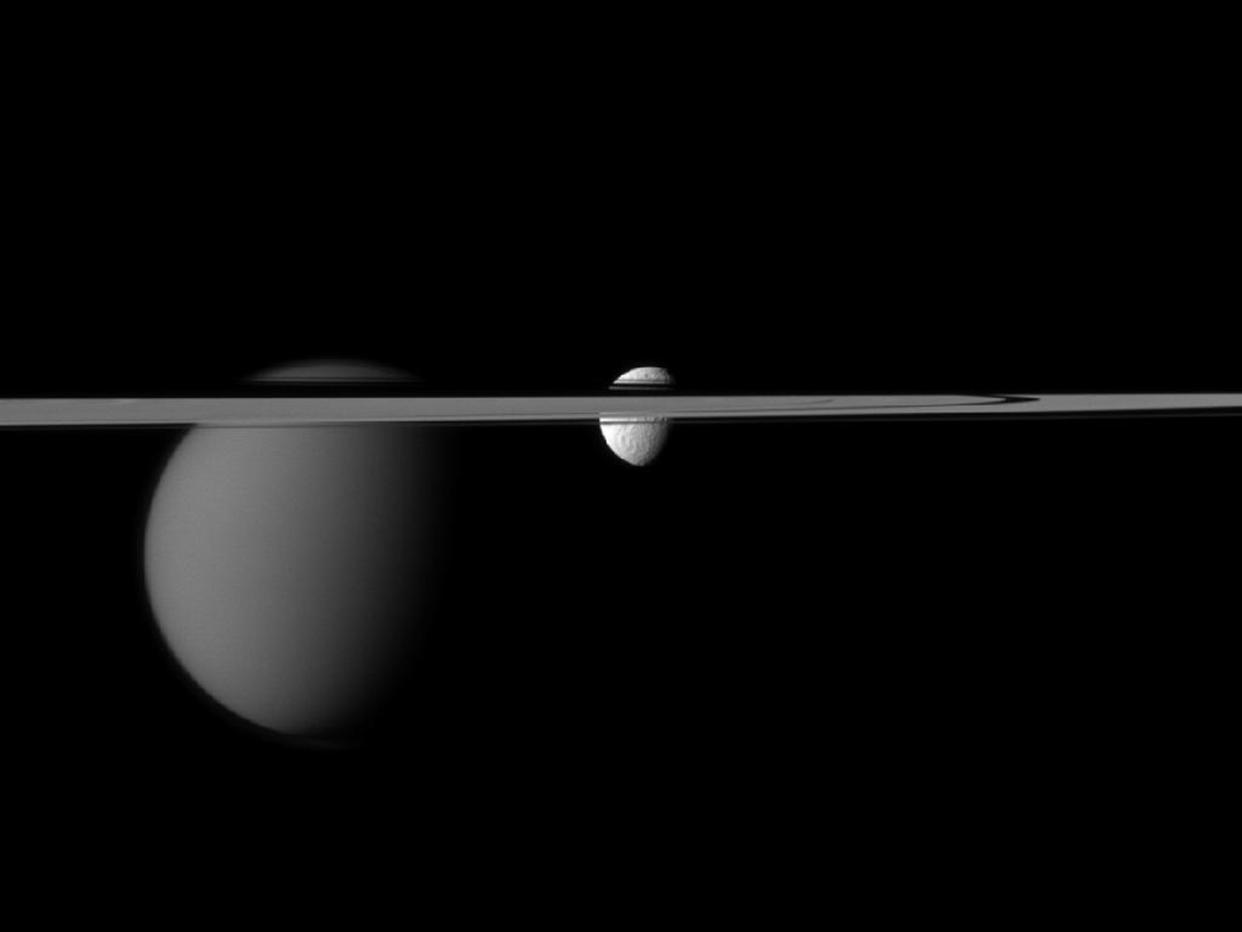Alien crystals ‘unlike any seen on Earth’ could be on Saturn’s moon Titan

Crystals unlike anything seen on Earth could adorn lakes on the surface of Titan, a moon of Saturn where huge dunes of frozen chemicals roll across the surface.
NASA has previously said that liquid water may exist deep under Titan's surface - making it one of the places in the solar system where life could exist.
Researchers at NASA’s Jet Propulsion Laboratory simulated the brutally cold ‘chemical soup’ of Titan’s surface - and found crystals which don’t exist on Earth.
Previously the researchers have discovered two ‘molecular minerals’, but recently unearthed a third made from acetylene and butane (used in welding and cooking stoves on Earth).
On Titan, where the temperature is 90 Kelvin, they actually form crystals, the researchers say.
Read more from Yahoo News UK:
Man who shot dead his best friend cleared of murder
Boris Johnson fumbles answers as he’s quizzed on Brexit
Bill Gates reveals Microsoft’s biggest ever mistake
The researchers wrote in a paper, ‘We have demonstrated previously that some organic molecules readily form co-crystals in Titan-relevant conditions, including acetylene.
‘We report here preliminary evidence for a third co-crystal between acetylene and butane, which could be the most common molecular mineral discovered so far.’
The researchers believe that structures of the strange crystals could form circles around the lakes of liquid methane on Titan’s surface.
structures of alien crystals encircling Titan's methane lakes.

 Yahoo News
Yahoo News 

